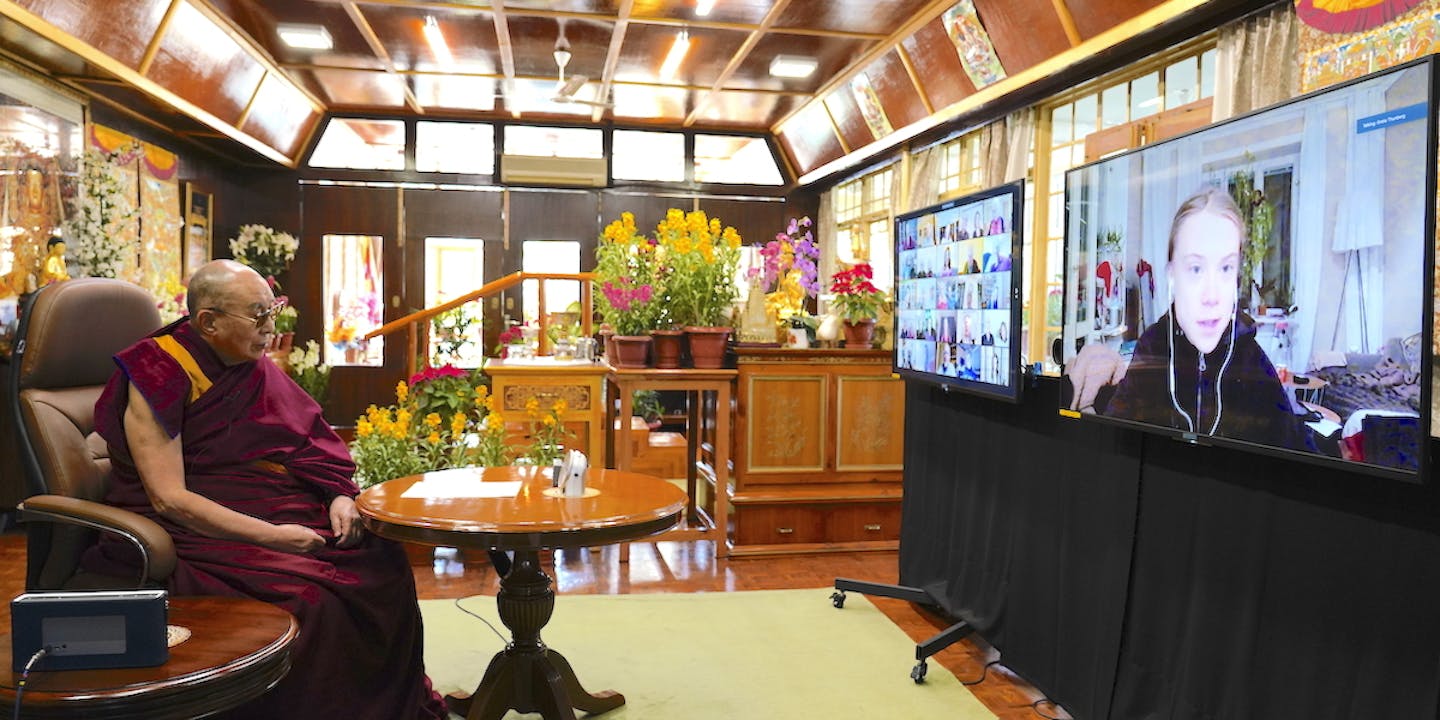Webinar Recap: A Conversation on the Crisis of Climate Feedback Loops with the Dalai Lama and Greta Thunberg
Each Wednesday, One Earth will be featuring a webinar recap from organizations and scientists around the world that focus on important topics such as biodiversity, conservation, food justice, and the intersections of environmental and human health.
Mind & Life Institute, an organization aimed at bringing “science and contemplative wisdom together to better understand the human mind and create positive change in the world,” hosted this exciting conversation. Millions tuned in live to view the Dalai Lama, Greta Thunberg, and scientists, Dr. Susan Natali and Dr. William Moomaw, discuss what can be done about climate feedback loops. Our host, Diana Chapman Walsh, President emerita of Wellesley College, begins with two words that sum up the crisis of feedback loops: “emergency” and “possibility”.
In his newly co-authored book, Our Only Home: A Climate Appeal to the World, the Dalai Lama opens with his letter to Thunberg. Touching on emergency his writes, “we are the only species with the capacity to destroy the earth… but, if we can destroy it, so too do we have the power to rebuild it.” Ending with this hope of possibility, he thanks Thunberg for her work, “I really admire a younger member of humanity, showing genuine sense of concern for our planet. This is a very hopeful sign.” While the Dalai Lama ensures us the work can be done, Thunberg let’s us know what is to be done.
Thunberg describes feedback loops as “irreversible chain reactions” or more bluntly, our “lack of respect for nature”. People don’t think “our actions have consequences” but they do, she reminds us. Despite being at two opposite ends of the age spectrum, “we share a common goal to protect our planet and life on this planet” and her and the Dalai Lama welcome two on-the-ground scientists to explain how feedback loops are affecting life on this planet.
As an ecologist at Woodwell Climate Research Center, Susan Natali, has seen firsthand the rapidly warming arctic. On a 90°F day in the Alaskan tundra, “my foot fell into the ground because there was no structure, no permafrost, anymore.” There is twice as much carbon in our permafrost than in our atmosphere, and the more it is released, the warmer it gets, and the faster it thaws. This is one of the many climate feedback loops taking place around the world.
William Moomaw, Professor of Environmental Studies at The Fletcher School, explains as the global temperature rises, our most trusted source of natural carbon reduction is also being diminished: our trees. Heat increases the metabolism of trees, which makes them hold less carbon, and therefore release more carbon in the atmosphere. Another vicious feedback loop, however, the solution is simple, “plant and protect.” Conservation and education are the keys to solving our climate feedback loop crisis.
We are left with a sense of urgency from Dr. Chapman Walsh, “we all need to become scholars and take initiative in educating ourselves” and also one of hope, that there are leaders, visionaries, scientists, and activists all around the world taking part in “holding ourselves accountable.” More information can be found in the short films, Climate Emergency: Feedback Loops narrated by Richard Gere, available for free to all ready to reverse our current climate feedback loops.



